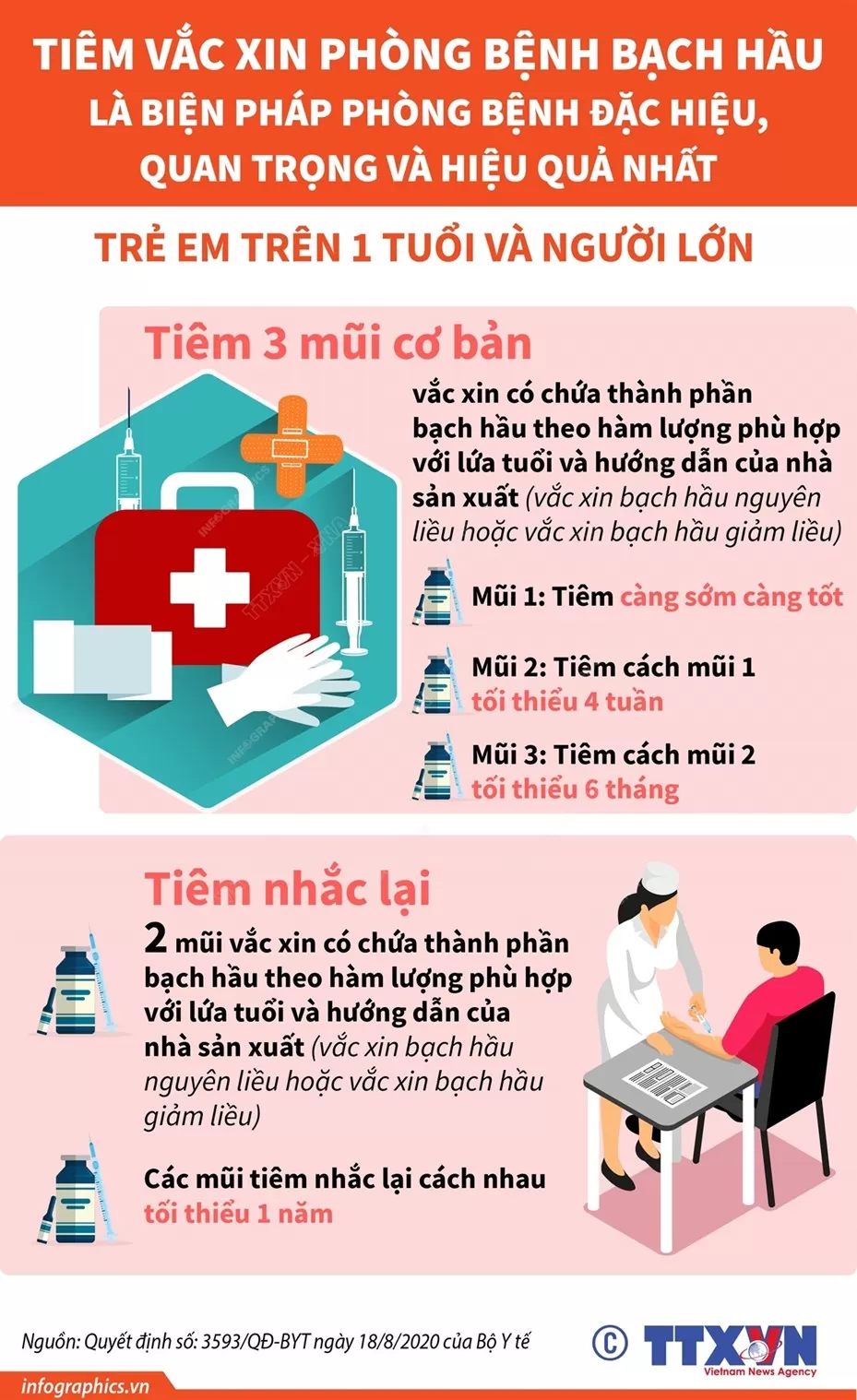1. What is diphtheria ?
Diphtheria is an infectious-toxic disease, transmitted through the respiratory tract and capable of causing epidemics, caused by Corynebacterium diphtheriae bacillus (also known as Klebs-Leoffler bacillus). The disease often occurs in children < 15 years old and in people who are not immune to diphtheria because they have not been fully vaccinated. [1]

2. Symptom
Common symptoms of diphtheria are as follows [1]
Incubation period: 2-5 days, no clinical symptoms.
Onset period:
- Patients often have a fever of 37.5o - 38oC, sore throat, irritability, fatigue, poor appetite, bluish skin, and runny nose on one or both sides, possibly mixed with blood.
- Examination of the throat: The throat is slightly red, and the tonsils have a fuzzy white spot in the form of a pseudomembranous membrane on one side. Palpable cervical lymph nodes are small, mobile, and painless.
Full-blown period: On days 2-3 of the disease.
- Whole body: The patient has a fever of 38o - 38.5o, painful swallowing, pale skin, extreme fatigue, loss of appetite, rapid pulse, and slightly lowered blood pressure.
- Throat examination: there is widespread pseudomembrane on one or both sides of the tonsils; Severe cases of pseudomembranous membrane spread to cover the uvula and pharynx. The pseudomembrane is initially ivory white, then turns pale yellow, adheres tightly to the mucosa, and peels off causing bleeding. If removed, it grows back very quickly after a few hours; The pseudomembranous membrane is tough, and insoluble in water, and the mucosa around the pseudomembranous membrane is normal.
- Angular lymph nodes are swollen and painful. Patients have a lot of runny noses, white mucus, or pus mixed with it.

3. Transmission route
The disease is transmitted through the respiratory tract through contact with sick people and healthy people carrying the bacteria. It can be transmitted by contact with contaminated objects.
The infectious period is about 2 weeks. Patients can eliminate bacteria right from the end of the incubation period. Healthy carriers can carry diphtheria bacteria for a few days to 4 weeks. Antibiotic treatment is effective quickly and stops transmission.
4. Prevention
Specific disease prevention measures
Vaccination against diphtheria is the most important and effective disease prevention measure, especially the implementation of diphtheria vaccination in the National expanded program on Immunization.
Non-specific disease prevention measures for people:
- Frequently wash your hands with soap; cover your mouth when coughing or sneezing; Maintain daily hygiene of body, nose, and throat; Limit contact with people infected/suspected of having the disease.
- Keep your home, kindergarten, and classroom well-ventilated, clean, and well-lit.
- Ensure eating hygiene, cooked food, boiled drinks, clean bowls and chopsticks
- When there are signs of illness/suspicion of illness, you must immediately notify the health authority for timely isolation, examination, testing, and treatment.
- People in the outbreak must strictly comply with taking prophylactic antibiotics and vaccination as directed and requested by health authorities.

Compiled by: Le Minh Dat (email: lmd@vpha.org.vn)
Tài liệu tham khảo
1. Bộ Y tế (2020), QĐ 2957/QĐ-BYT về việc Ban hành hướng dẫn chấn đoán và điều trị Bạch hầu ngày 10 tháng 7 năm 2020, chủ biên.
2. Bộ Y tế (2020), QĐ 3593/QĐ-BYT về việc Ban hành hướng dẫn giám sát và phòng chống bệnh Bạch hầu ngày 18 tháng 8 năm 2020, chủ biên




